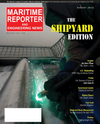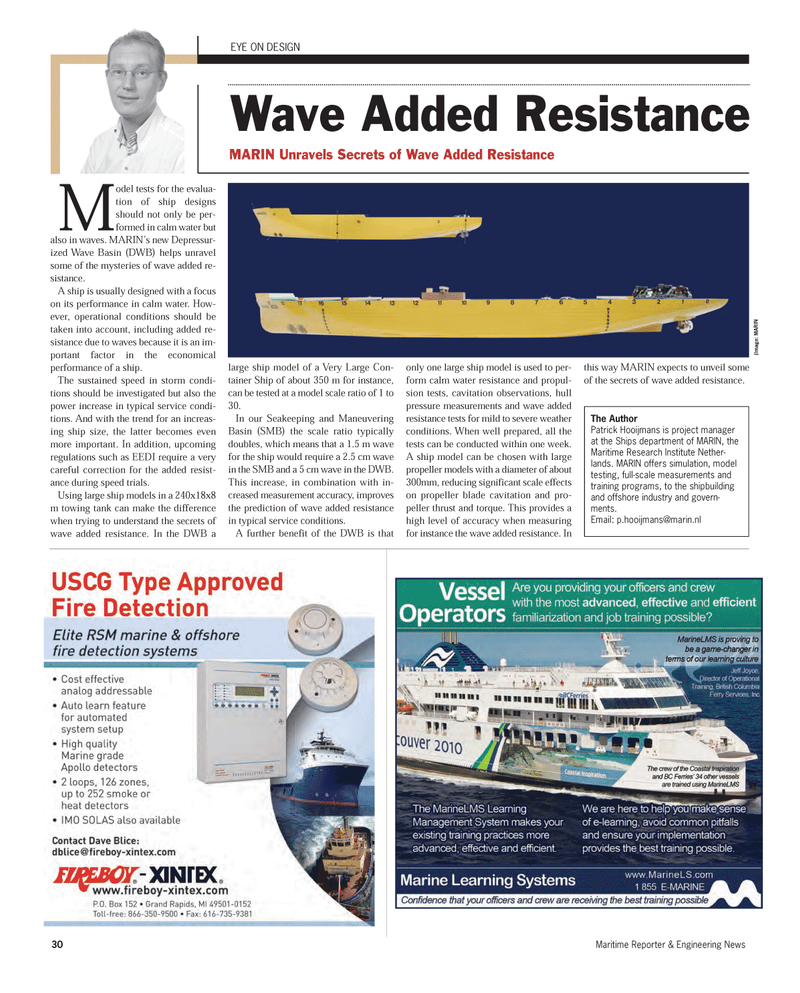
Page 30: of Maritime Reporter Magazine (August 2012)
The Shipyard Edition
Read this page in Pdf, Flash or Html5 edition of August 2012 Maritime Reporter Magazine
30Maritime Reporter & Engineering News Model tests for the evalua- tion of ship designsshould not only be per- formed in calm water but also in waves. MARIN?s new Depressur- ized Wave Basin (DWB) helps unravel some of the mysteries of wave added re- sistance.A ship is usually designed with a focuson its performance in calm water. How- ever, operational conditions should be taken into account, including added re- sistance due to waves because it is an im- portant factor in the economical performance of a ship. The sustained speed in storm condi-tions should be investigated but also the power increase in typical service condi- tions. And with the trend for an increas- ing ship size, the latter becomes even more important. In addition, upcomingregulations such as EEDI require a very careful correction for the added resist-ance during speed trials. Using large ship models in a 240x18x8 m towing tank can make the difference when trying to understand the secrets ofwave added resistance. In the DWB a large ship model of a Very Large Con- tainer Ship of about 350 m for instance,can be tested at a model scale ratio of 1 to30. In our Seakeeping and Maneuvering Basin (SMB) the scale ratio typicallydoubles, which means that a 1.5 m wave for the ship would require a 2.5 cm wave in the SMB and a 5 cm wave in the DWB. This increase, in combination with in-creased measurement accuracy, improves the prediction of wave added resistance in typical service conditions.A further benefit of the DWB is that only one large ship model is used to per- form calm water resistance and propul- sion tests, cavitation observations, hull pressure measurements and wave added resistance tests for mild to severe weather conditions. When well prepared, all the tests can be conducted within one week.A ship model can be chosen with large propeller models with a diameter of about300mm, reducing significant scale effects on propeller blade cavitation and pro- peller thrust and torque. This provides a high level of accuracy when measuring for instance the wave added resistance. In this way MARIN expects to unveil some of the secrets of wave added resistance. EYE ON DESIGNWave Added Resistance MARIN Unravels Secrets of Wave Added Resistance (Image: MARINThe AuthorPatrick Hooijmans is project manager at the Ships department of MARIN, the Maritime Research Institute Nether- lands. MARIN offers simulation, model testing, full-scale measurements and training programs, to the shipbuilding and offshore industry and govern- ments. Email: [email protected] MR#8 (26-33):MR Template 8/8/2012 11:56 AM Page 30

 29
29

 31
31
